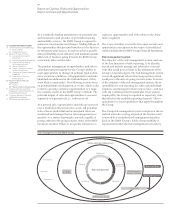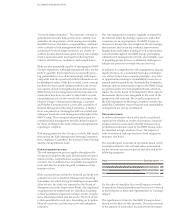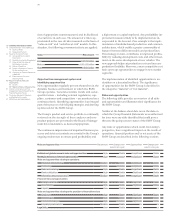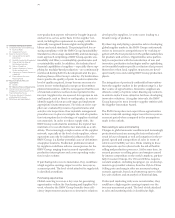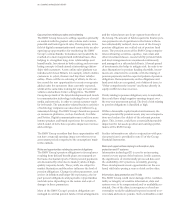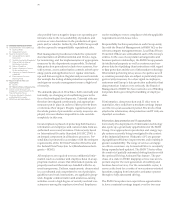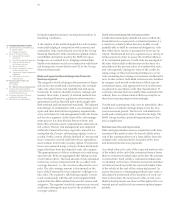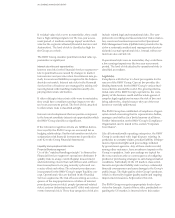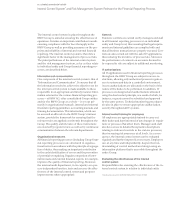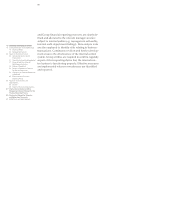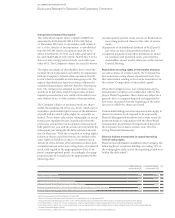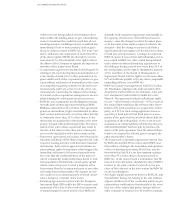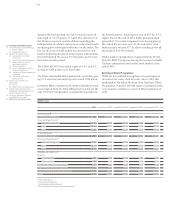BMW 2015 Annual Report Download - page 78
Download and view the complete annual report
Please find page 78 of the 2015 BMW annual report below. You can navigate through the pages in the report by either clicking on the pages listed below, or by using the keyword search tool below to find specific information within the annual report.
78
18 COMBINED MANAGEMENT REPORT
18
General Information on the
BMW
Group
18 Business Model
20 Management System
23 Report on Economic Position
23 General and Sector-specific
Environment
27 Overall Assessment by Management
27
Financial and Non-financial
Performance Indicators
29 Review of Operations
49 Results of Operations, Financial
Position and Net Assets
59 Comments on Financial Statements
of BMW AG
62 Events after the End of the
Reporting Period
63 Report on Outlook, Risks and
Opportunities
63 Outlook
68 Report on Risks and Opportunities
81 Internal Control System and Risk
Management System Relevant for
the
Financial Reporting Process
83 Disclosures Relevant for Takeovers
and Explanatory Comments
87
BMW Stock and Capital Markets
being downgraded and any ensuing deterioration in
financing conditions.
A description of the methods applied for risk measure-
ment and hedging in conjunction with currency and
commodity risks is provided in note 42 of the Group
Finan cial Statements. If the relevant recognition criteria
are fulfilled, derivatives used by the BMW Group as
hedges are accounted for as hedging relationships.
Further information on risks in conjunction with finan-
cial
instruments is provided in note 42 to the Group
Financial Statements.
Risks and opportunities relating to the Financial
Services segment
The categories of risk relating to the provision of finan-
cial services are credit and counterparty risk, residual
value risk, interest rate risk, liquidity risk and opera-
tional risk. In order to identify, measure, manage and
monitor these risks, a variety of internal methods has
been developed based on regulatory environment re-
quirements (such as Basel III) and which comply with
both national and international standards. The adopted
risk strategy, in combination with a set of strategic
prin-
ciples and rules derived from regulatory requirements,
serve as the basis for risk management within the Finan-
cial
Services segment. At the heart of the risk manage-
ment process is a clear division between front- and
back-office activities and a comprehensive internal con-
trol system. The key risk management tool employed
within the Financial Services segment is aimed at en-
suring that the Group’s risk-bearing capacity is not ex-
ceeded. In this context, all risks (defined as “unexpected
losses”) must be covered at all times by an appropriate
asset cushion in the form of equity capital. Unexpected
losses are measured using a variety of value-at-risk tech-
niques that have been developed for each risk category.
The appropriateness of these techniques is tested at reg-
ular intervals. Risks are aggregated after taking account
of correlation effects. The total amount of risks calculated
in this way is then compared with the so-called “risk
coverage amount”, i.e. the resources allocated to cover
risks. The risk coverage amount is determined on the
basis of the Financial Services segment’s willingness to
take risks. The segment’s risk-bearing capacity is moni-
tored continuously with the aid of an integrated limit
system that also differentiates between the various risk
categories. The segment’s total risk exposure was covered
at all times during the past year by the available risk-
coverage volumes.
Credit and counterparty risks and opportunities
Credit and counterparty default risk arises within the
Financial Services segment if a contractual partner (i. e.
a customer or dealer) either becomes unable or only
partially able to fulfil its contractual obligations, such
that either lower income is generated or losses are in-
curred. The Financial Services segment uses a variety of
rating systems in order to assess the creditworthiness
of its contractual partners. Credit risks are managed at
the time of the initial credit decision on the basis of a
calculation of the present value of standard risk costs
and subsequently, during the term of the credit, by
using a range of risk provisioning techniques to cover
risks emanating from changes in customer creditworthi-
ness. In this context, individual customers are classified
by category each month on the basis of their current
contractual status, and appropriate levels of allowance
recognised in accordance with that classification. If
economies develop more favourably than assumed in the
outlook, there is a chance that credit losses may be re-
duced and earnings improved accordingly.
If credit and counterparty risks were to materialise, they
could have a medium earnings impact over the two-
year assessment period. The level of risk attached to
credit and counterparty risks is classified as high. The
BMW Group classifies potential opportunities in this
area as significant.
Residual value risks and opportunities
Risks and opportunities arise in conjunction with lease
contracts if the market value of a leased vehicle at the
end of the contractual term of a lease differs from the
residual value estimated at the inception of the lease
and factored into the lease payments.
A residual value risk exists if the expected market value
of the vehicle at the end of the contractual term is lower
than its estimated residual value at the date the contract
is entered into. Each vehicle’s estimated residual value
is calculated on the basis of historical external and inter-
nal data and used to predict the expected market value
of the vehicle at the end of the contractual period. As
part of the process of managing residual value risks, a
c
alculation is performed at the inception of each con-
tract to determine the net present value of risk costs.
Market developments are observed throughout the con-
tractual period and the risk assessment updated appro-
priately.


